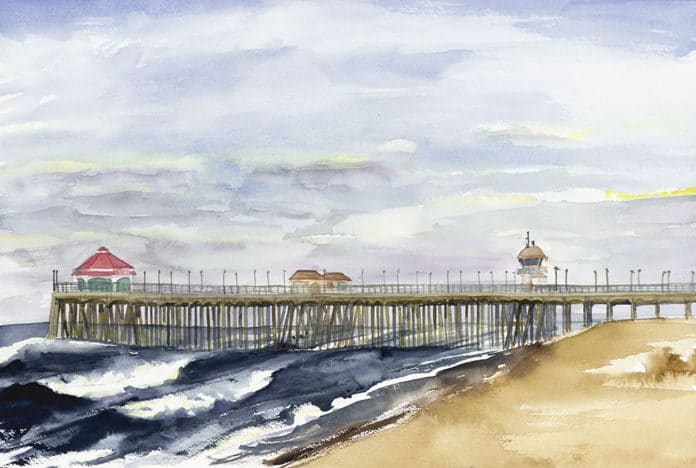By Eric. M. Davis
An excerpt from “The California Pier Series: 50 Plein Air Watercolor Paintings”
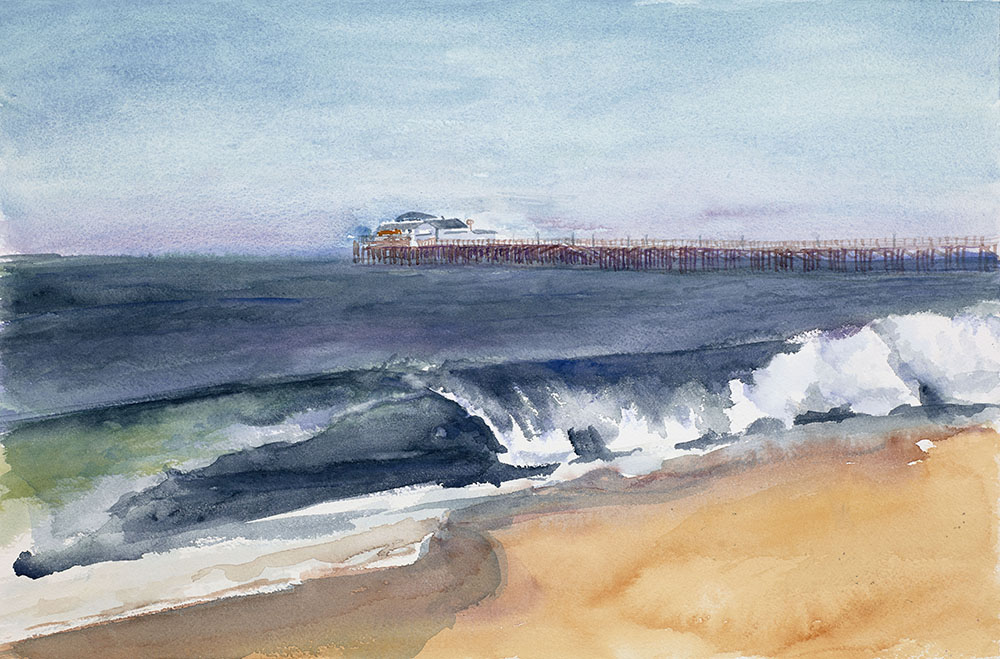
The California Pier Series™, a collection of 50 plein air watercolor paintings, began on October 8, 2014. I dropped my wife Juliet off at her work and continued to the coast with the intention to paint a morning seascape en plein air. Plein air painting utilizes natural light and surroundings, requiring the artist to paint what he sees at the moment he applies the brush to the composition. While heading toward Huntington Beach, I misinterpreted my phone’s GPS and wound up in Seal Beach instead.
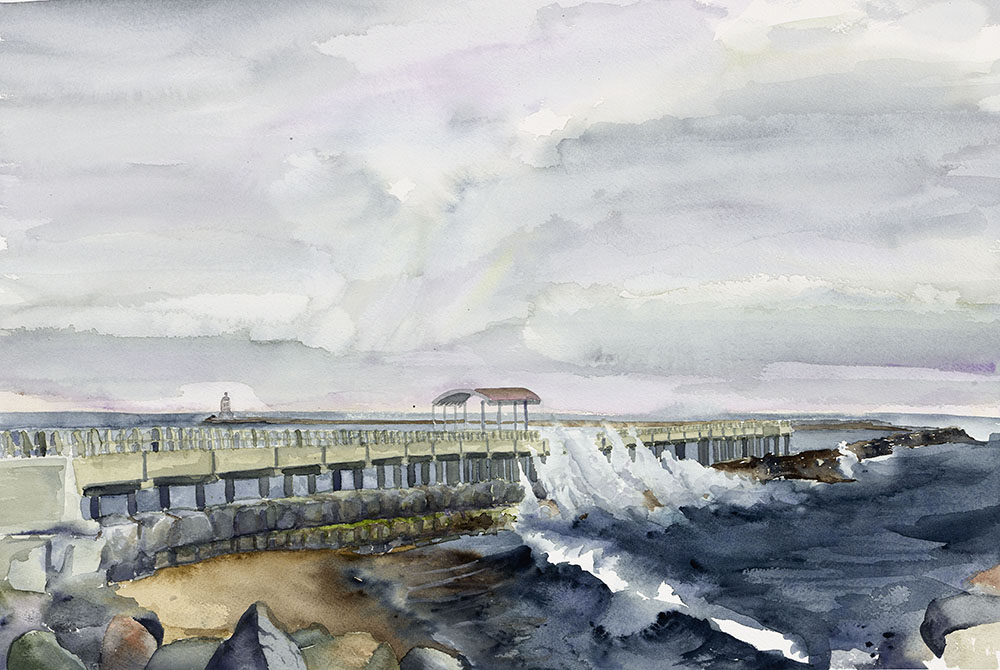
It was a beautiful day to paint. I had one visitor that day, a jogger. A fit woman in her mid-20s with blond hair pulled back under a headband. On her second pass by, she stopped and asked me, “Can I see?” “Absolutely,” I replied. Observing the painting, she expressed how wonderful the wave was rendered and wondered about the empty space above the ocean’s horizon line. I told her the pier was going there and I pointed to the view. “Oh, it’s beautiful. Can I take your picture?” “Yes,” I replied. “Would you also take a photo of me with the painting and the pier in the background?” She happily agreed and snapped a shot with my smartphone. I thanked her and she jogged along. When I finished painting, I shared this photo and a picture of the completed painting on Facebook.
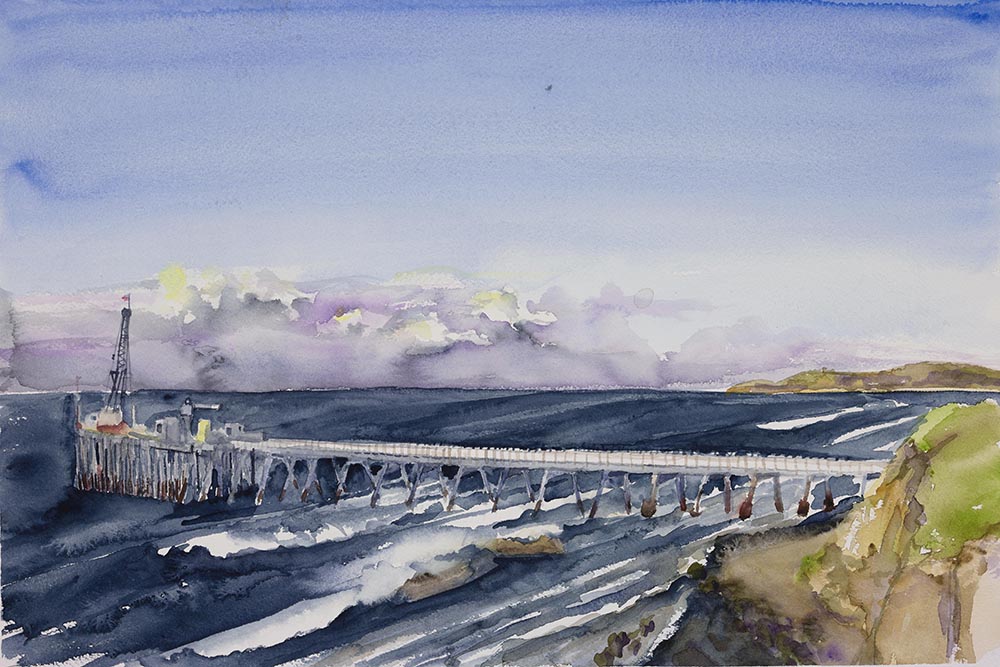
That afternoon I attended a luncheon in Huntington Beach, recognizing my wife Juliet’s 30 years of service with the Boeing Company. Juliet’s good friend from work asked about my day, so I pulled out my phone to show off the morning’s painting. I know it’s not the best way to view a painting, but it is convenient and often serves as an icebreaker for conversation. The phone was passed around the full group of 15 of us before coming back to me. It was then that I realized the actual painting was in the car. I raced out to the parking lot, brought the painting in and presented it. It was impressive enough to generate an offer to buy it on the spot.
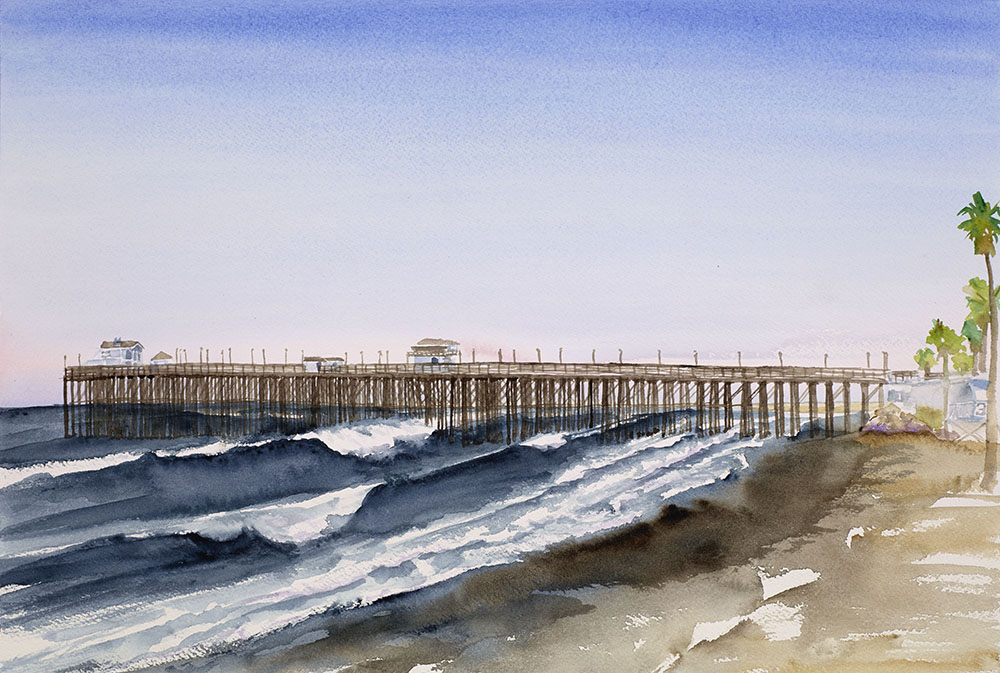
As we were leaving the restaurant, I opened my Facebook account. My post from before lunch had generated 113 likes, 27 comments, and 1 share. Higher than average results for me to receive from a post. I now knew of five people genuinely interested in the painting. I decided to sell it on eBay. I listed the item the next morning. The following Thursday, the auction ended at 6:30 a.m. The price hadn’t moved from the weekend’s top bid. eBay didn’t feel like a good fit. Still a sale though, and still more than the original offer. I decided to focus on producing more paintings, rather than figuring out how to be successful at auctioning them off.
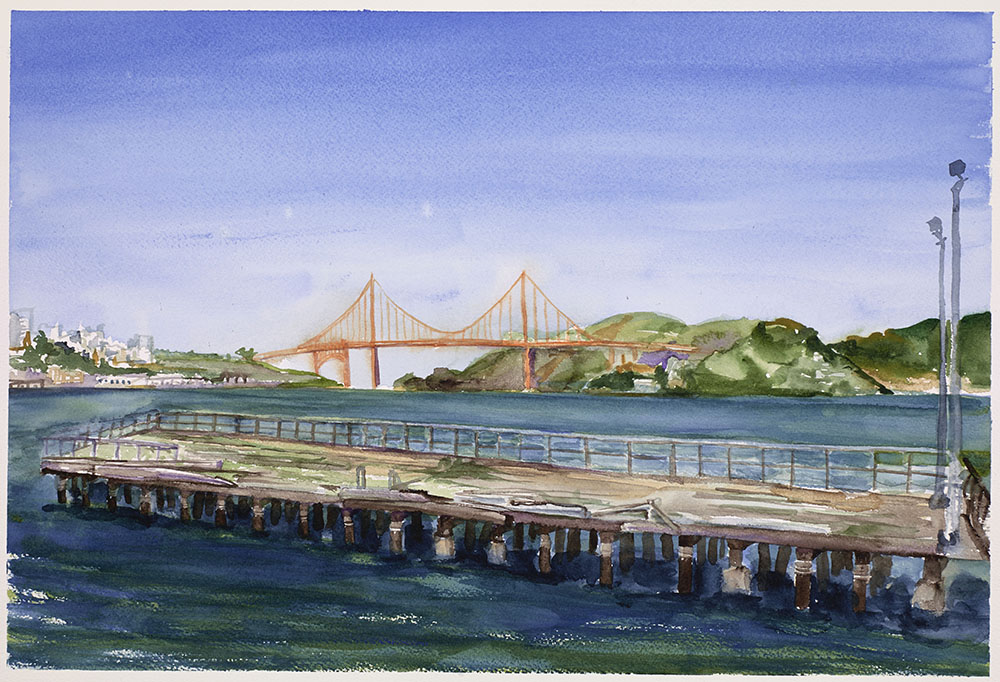
Three aspects became apparent to me after completing Seal Beach Pier. First, I was able to finish a plein air painting on site within one session. Second, sharing the progress of the painting via social media generated interest among my friends and added followers. Third, this painting sold quickly. I decided to try it again.
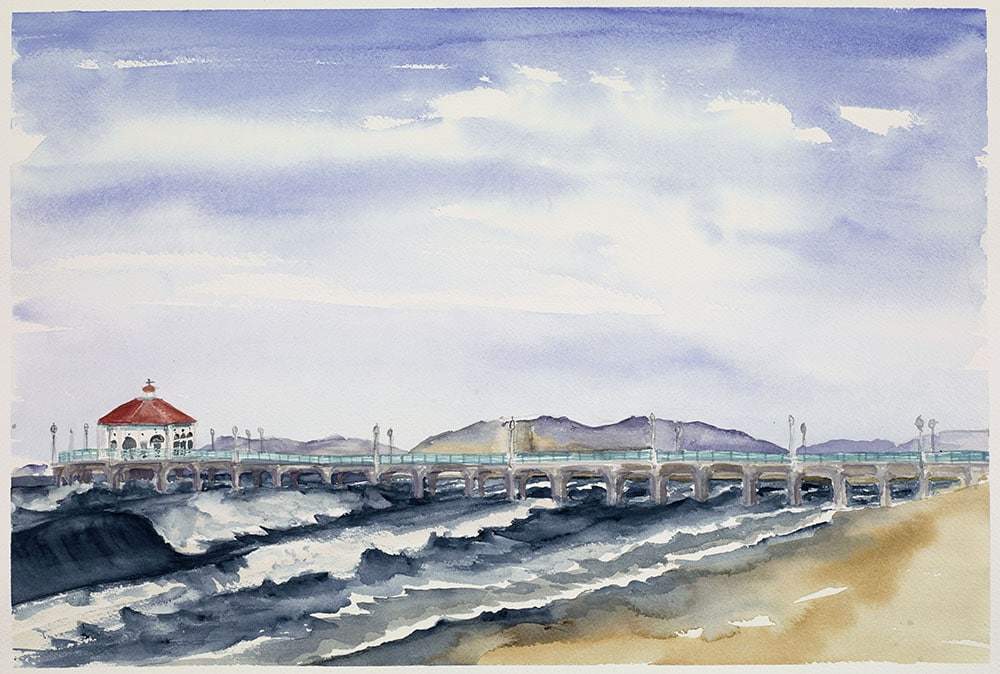
How far from home could I venture and return in one day? Pismo Beach, a four-hour drive from home, was the answer. A seed was planted. This inspiration, painting along the coast, far outweighed the outstanding time commitment and travel the pier series would require. Ultimately, to complete the series, I traveled over 11,350 miles in 17 months.
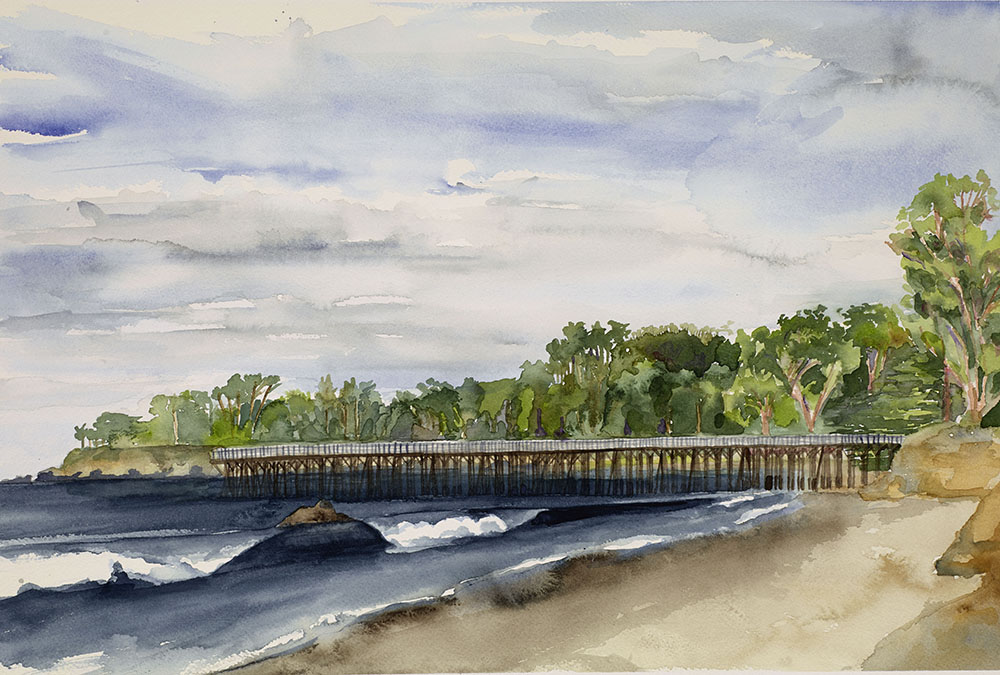
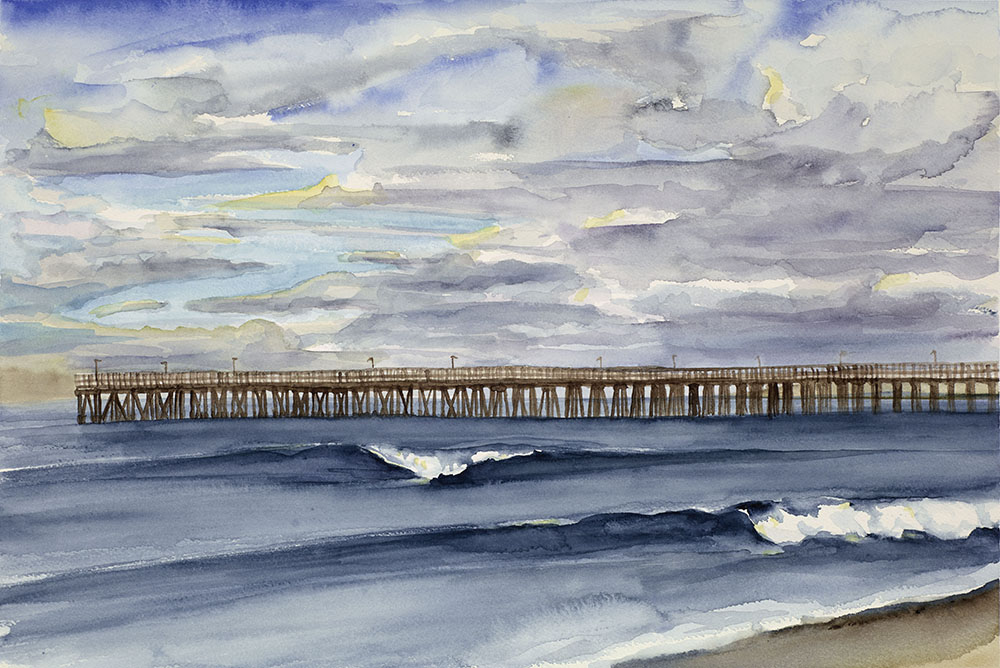
Bonus: Painting the Green Pleasure Pier
All of my paintings were done in one session, with one exception. The Green Pleasure Pier in Avalon, Catalina Island, took two days.
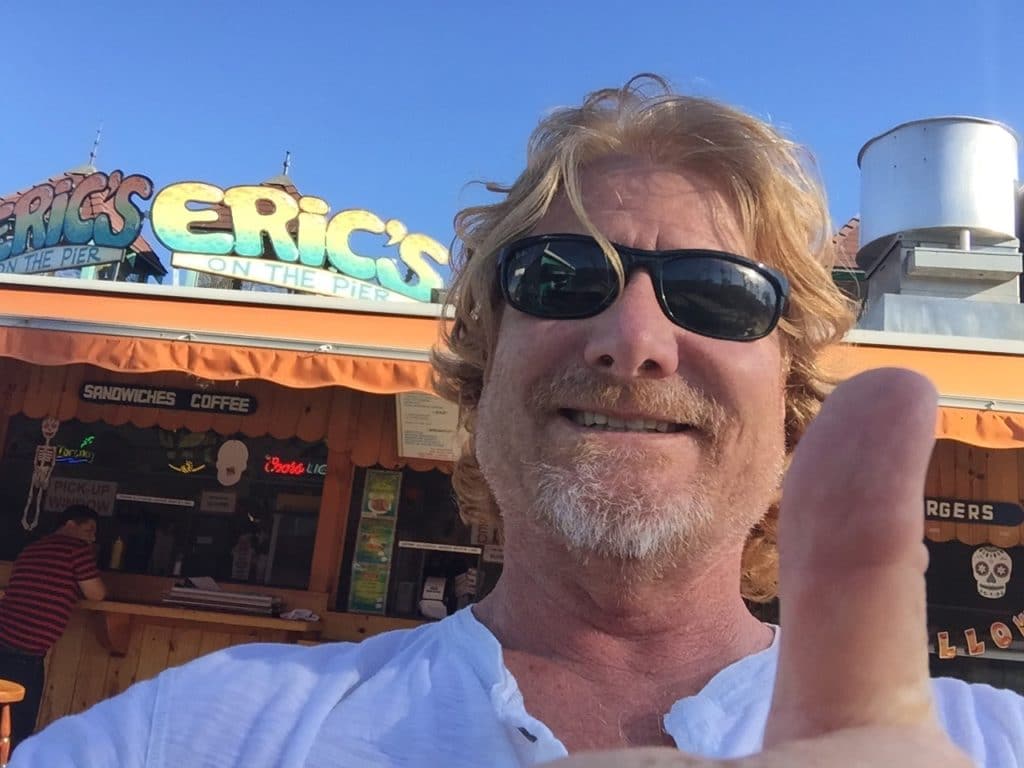
Luckily I had planned on a three-day trip to Catalina. I figured if the weather became a concern, I would have an additional day to work around it. Departing from Long Beach, I arrived mid-afternoon and found my hotel room. After unpacking and arranging my equipment, I scouted the pier and beach for the ideal vantage point. The pier extends northeast, and with the mountains behind, figuring out the best lighting is tricky. Realizing I wanted to include the iconic Casino, I found a spot on the beach between the ferry dock and the pier.
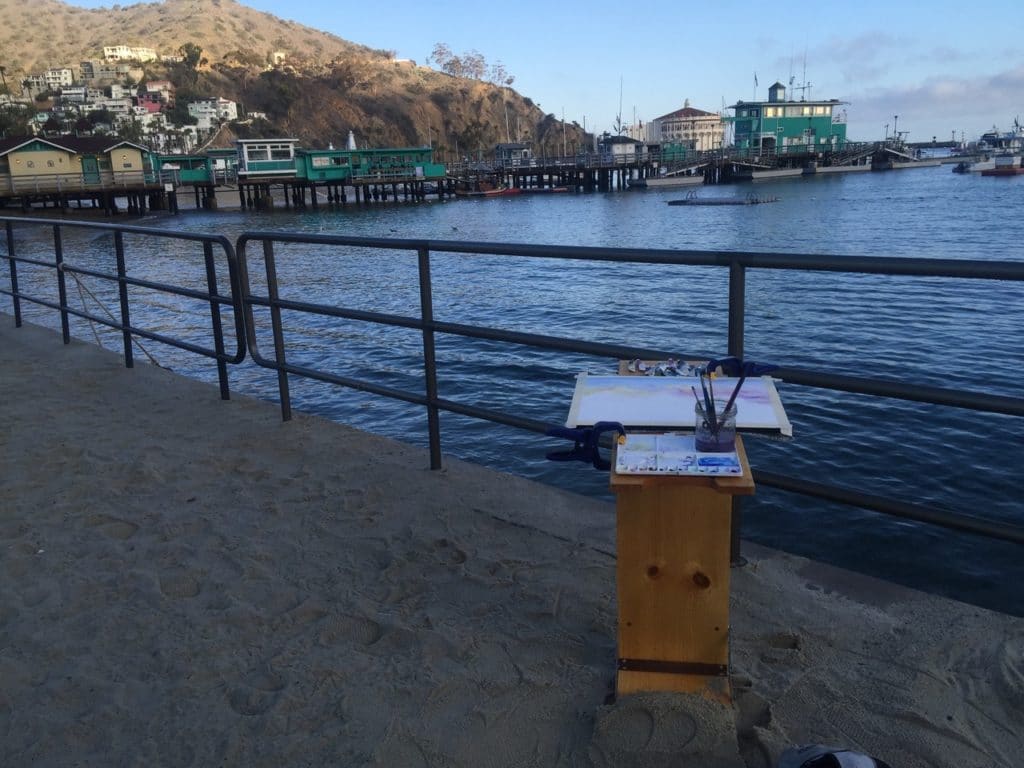
Painting Day One: I ate breakfast and set up to paint around 7:30. People were already heading to catch the first ferry back to the mainland. The morning marine layer blew away within a few hours. I enjoyed seeing the sun kiss the edges of the purple clouds against the brilliant blue sky. It was the beginning of a beautiful day. Eventually, the constant flow of tourists escaped my attention. There were a number of inquiries, and one in particular from a PBS producer changed my focus.
They were interested in capturing how people utilize and appreciate Avalon. I was told a cameraman would be by first to get footage of me painting. I tried my best to paint while being videotaped, but the detail of the painting required much more concentration. The cameraman was happy with the footage and indicated that the producer/host would be back to interview me before an afternoon ferry departure.
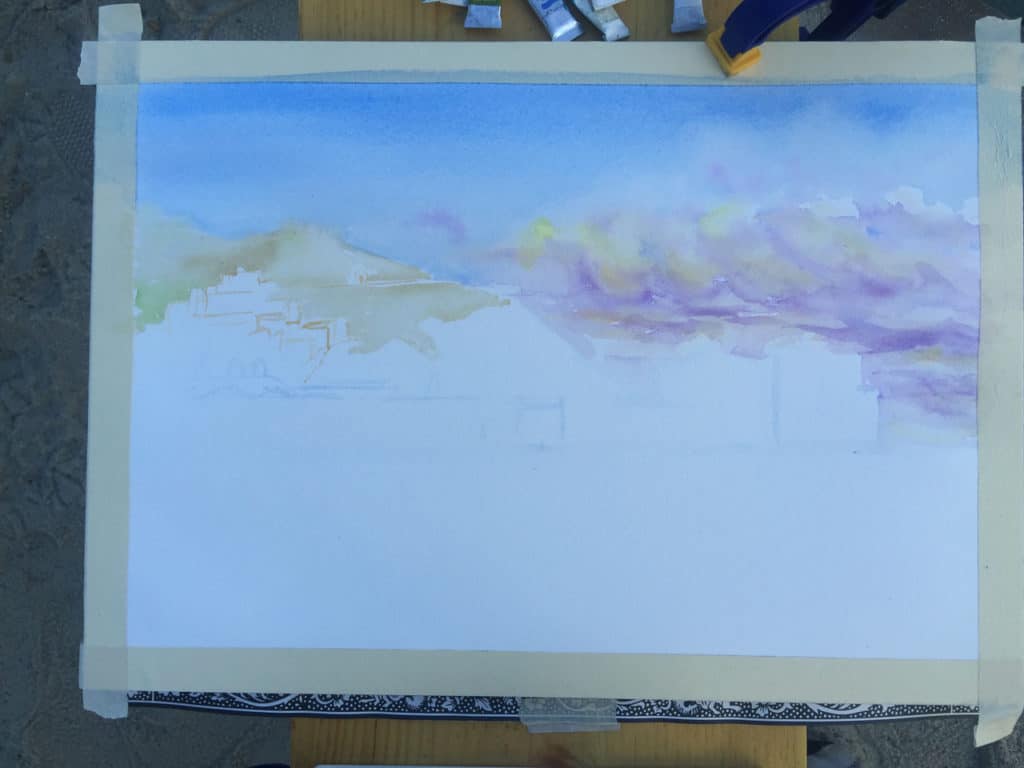
I struggled to paint as my mind went into overdrive about what I might say. My concern was not necessary; the interviewer never showed. As people began lining up for the afternoon ferry home, my ego bruised, I called it a day.
Painting Day Two: Now with a scheduled departure of my own, I had no choice but to finish the painting quickly. My departure time was around 11:00 a.m. As the morning wore on, the lines to board began to lengthen and my anxiety grew. Knowing I had to finish, I regained focus, completing the painting in the morning’s two-and-a-half-hour session.
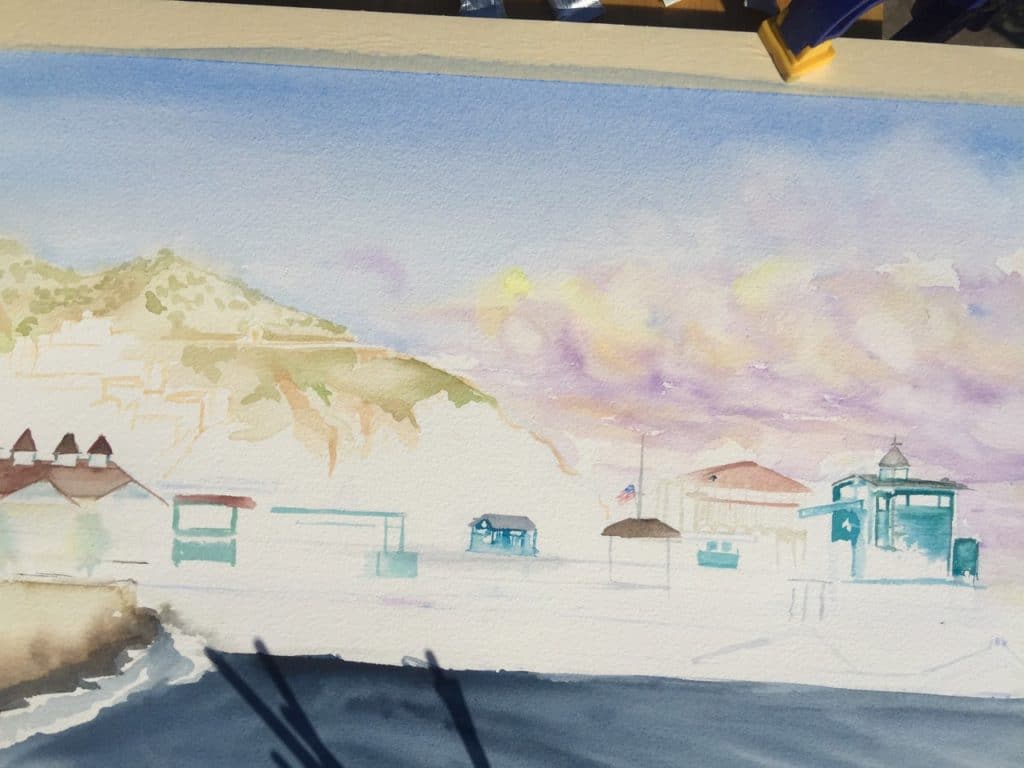
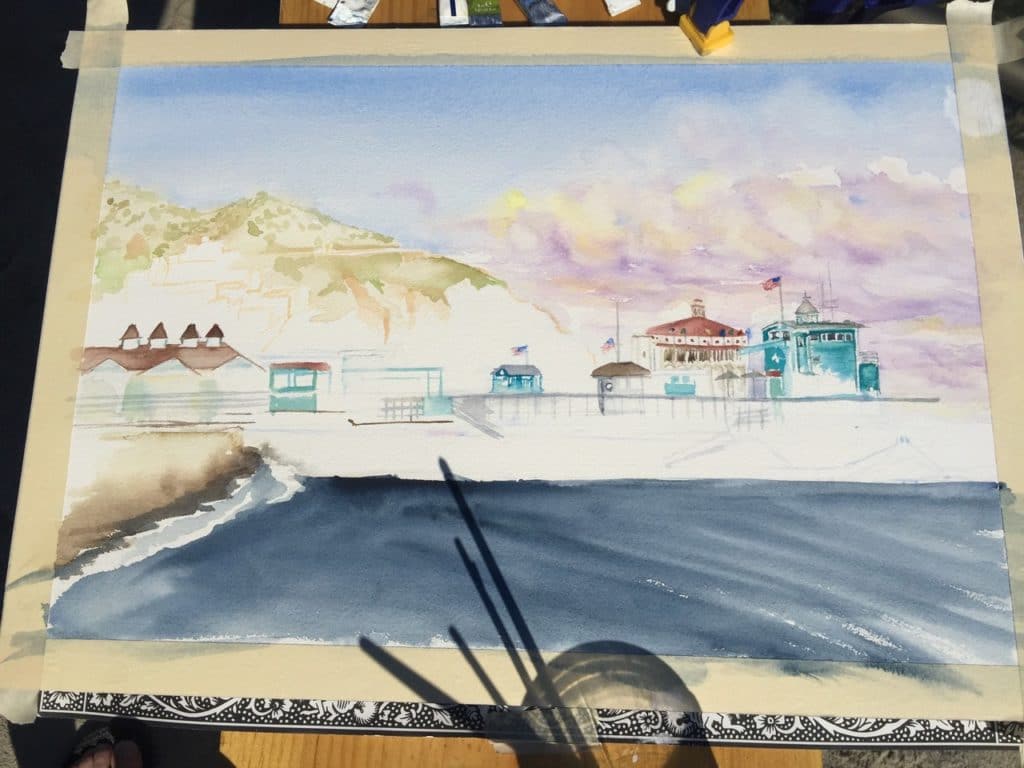
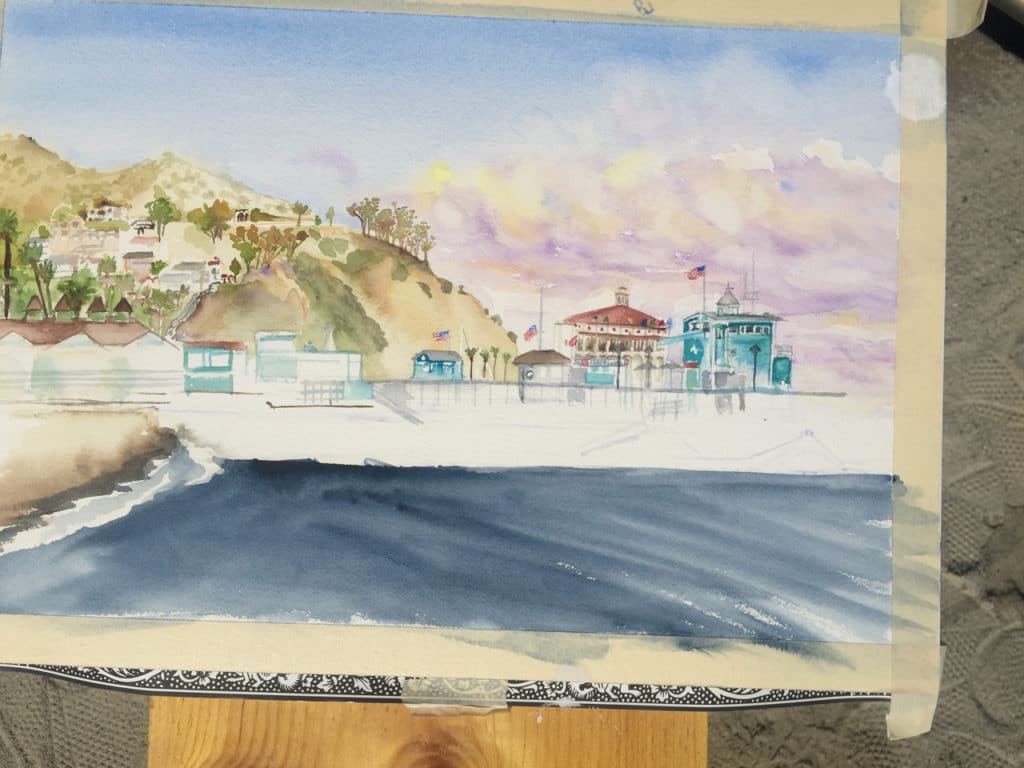
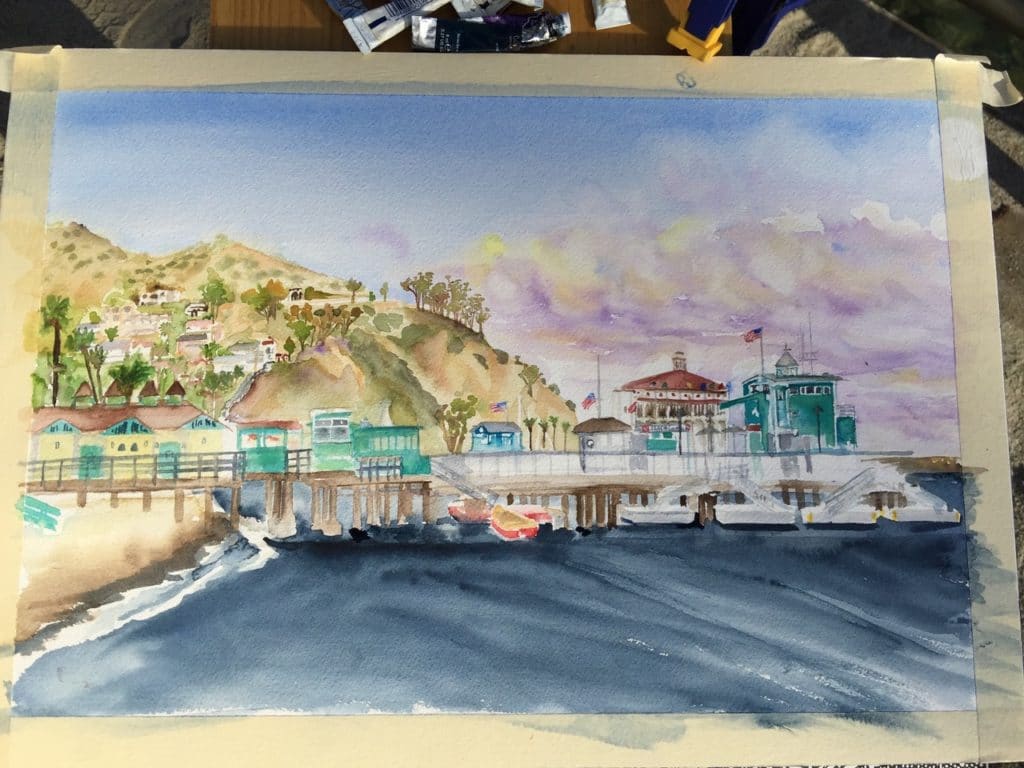
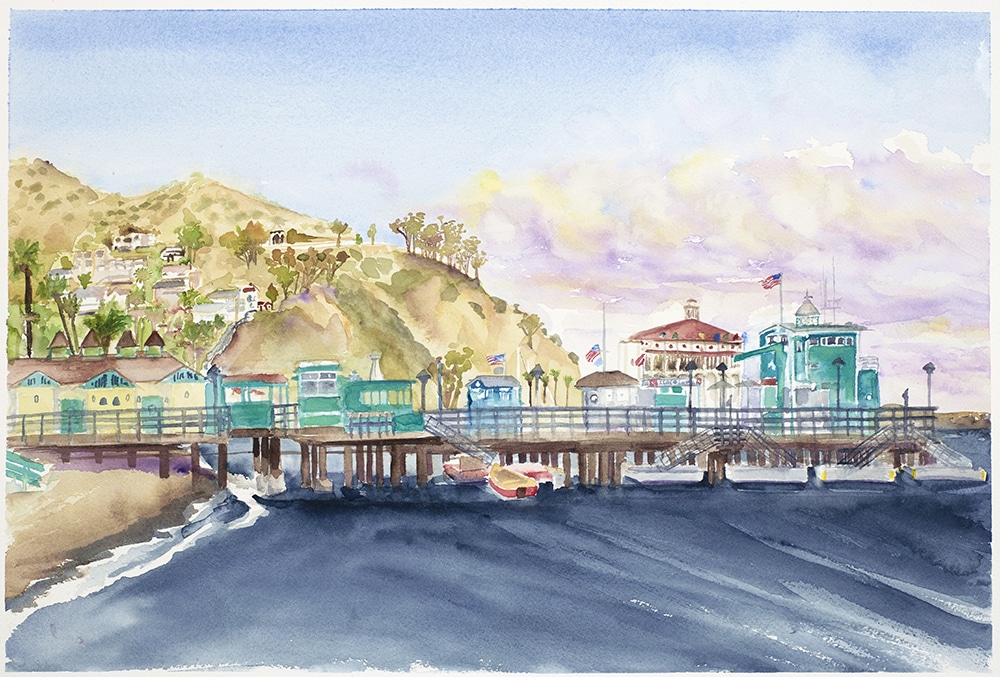
In August 2014, Eric began painting 50 plein air watercolor paintings of California piers. The series was completed in 17 months, after traveling over 11,350 miles. The resulting 116-page book, The California Pier Series™, includes process tips alongside his paintings that spanned a distance of 883 miles from north to south. 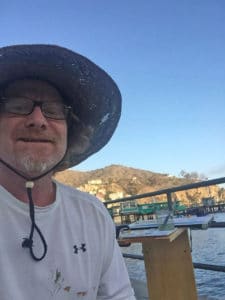
Eric M. Davis, an artist and marketing professional, operates Eric M. Davis Studio, LLC, in La Verne, California. He and his wife Juliet have been married since 1986. Their daughter Riley is a ’15 graduate of the University of California Santa Cruz, and their son Brandt is a ’17 graduate of Carleton College in Northfield, Minnesota. Davis and his brother Carl have developed and patented the Folding Art Horse, a drawing bench for artists.
Committed to using the same materials for each painting, Davis used watercolor blocks clamped to his art horse turned on end. The block’s paper required a time-consuming taping off of the border, which upon removal, often ripped off some of the painting. Also disappointed by the failing of the integrity of the block, sometimes as early as the 7th page of the 20 page block, Eric dreamed of a single sheet option. Now instead of investing in a costly block of 20 sheets, a single sheet purchase yields two paintings with the LaMoitié™ and four with the LeQuart™ Plein Air Watercolor Frames he has designed.
Learn more about Davis, his art, and his products at ericmdavis.com.

